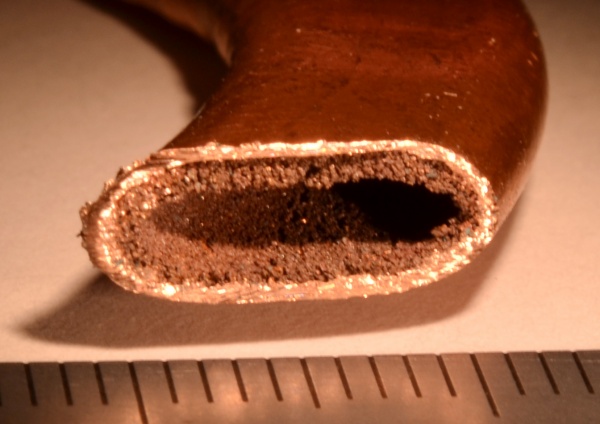|
heat pipes have become an increasingly utilized tool for engineers to solve thermal management issues in designing electronics, particularly as the size of the electronics continues to shrink and the component density continues to grow. round and flat heat pipes have been incorporated in pcbs, cpus, and in mobile applications.

(wikimedia commons)
in 2015, md monir hossain and john kizito, engineers at north carolina a&t university in greensboro, published a report in frontiers in heat pipes that discussed the thermal performance of flat loop heat pipes and their impact on the cooling of electronics.
the abstract from the report stated:
“thermal management is an important issue for electronic cooling application. choosing an efficient cooling technique depends on thermal performance, reliability, manufacturing cost, and prospects for minimization of packaging cost.
“based on these grounds, loop heat pipe (lhp) is a highly efficient two-phase cooling system used for passive cooling of critical components especially in satellite technology. loop heat pipe uses capillary action to circulate cooling fluid. the capillary pressure developed in the pores of the wick material provides the driving force to pump the fluid.
“a loop heat pipe with flat evaporator has been designed and fabricated. an experimental study was performed to investigate the loop performance at different heat loads. lhp was instrumented with thermocouples to measure the temperature history at various locations of loop. also the lhp was designed to be transparent to visualize the two phase flow phenomena.
“temperature oscillations have been observed in the evaporator, vapor line and condenser during the startup of operation of the lhp. performance of lhp has been evaluated at a certain range of evaporator heat loads.
“the minimum thermal resistance of lhp was 0.78 °c/w for a heat load of 100 w while the maximum was 3.1 °c/w for a heat load of 20 w. the maximum heat transfer coefficient in the evaporator was 14114 w/m2? for a heat load of 100 w. in addition, it was found that the determination of startup and/or unstart is necessary for control and operation of lhp.”
read the full report from nca&t at http://www.thermalfluidscentral.com/journals/index.php/heat_pipes/article/view/438/421.
for another perspective on flat loop heat pipes, read “loop heat pipes with a flat evaporator” that was published in qpedia thermal emagazine, the coolingzone media sponsor. the full article can be found at https://www.coolingzone.com/blog/wp-content/uploads/2016/10/qpedia_mar14_loop_heatpipes_w_flat_evaporators.pdf.
|